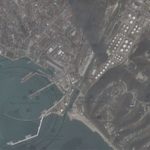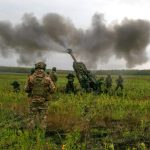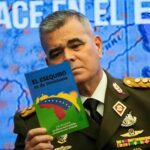The following post from the author’s archive dated July 2015
Strategic context
The following is a combatant actor analysis in the context of Turkey’s intention of implementing a safe zone in Northern Syria (west of Euphrates river), both because of a imminent Kurdish national security threat, and of the so-called Islamic state’s officiated hostilities towards Ankara. But also, it could serve as a safe zone/buffer zone for the Syrian refugees who could be relocated there, in a secure environment were they can receive humanitarian aid facilitated by NGOs.
There are unclear factors regarding this strategy, one of the biggest being “who will implement the safe zone?”. It is a guarantee that the respective battle-objective implementing actor will be offered at least Turkish air support and intelligence coordination. The moderate rebels from the Free Syrian Army are well regarded as being a part of the plan, but recent information indicates the emergence of a well hidden asset (which required a lot of data mining in order to achieve information about) that has also being active as a part of the Opposition Rebels: The Syrian Turkmen Brigades.
who are the syrian turkmen?
Syrian Turkmen, as mentioned, are close to 3,000,000 in number. They have been fighting against Assad and ISIS since the start of the war on the Opposition’s rebels’ side with the Free Syrian Army, more exactly. Based on the ORSAM Think Tank’s report there are several issues that made difficult the unification of all the Syrian Turks under the same military structure until now. They hadn’t been able to organize themselves under the oppressive Ba’ath regime, just after the civil war broke[18].

They are not to be confused by Turks from Turkey or Turkmen from Turkmenistan; the Syrian Turkmen have been in Syria before Ottoman times, around 1060- 1070 when Oghuz tribes migrated there under the Eljuk Empire. They are spread through all the country, but the biggest concentration is the North-west Mountains of Syria, Aleppo plus major enclaves near Damascus and Latakia[15].
political structure
The Syrian Turkmen National Assembly is a recent superstructure that they have managed to develop in order to unite still newly-formed political parties that represent them. In this effort they have managed to create a framework in which they could work together in the field. The political parties are secular and democratic and each of them has a military wing consisting of brigades.
Lacking external support and training they have been concentrating on defensive duties more than offensive operations, providing security among the Turkmen villages and neighborhoods, especially in Aleppo – where one of their biggest concentrations is located.
Some of them still live under a tribal structure, while others don’t even speak the Turkish language anymore, due to the regime’s oppressive stance against them. They are largely Sunni, while some of them are Shia of Alawite-Anatolian origin. But their perspective in political affairs is a democratic and secular one. They want a government where they could preserve or revive their almost wiped out culture[19].
ankara links
On the 28th of July, a secret meeting took place in Ankara between Turkish Intelligence officers and Turkmen Brigade representatives (Syrian Turkmen Assembley, Syrian Turkmen National Bloc etc.). The talks have been about completely unifying the troops in order to reach the number of 5,000 and also to behave, fight and move like a regular army. The troops will take positions at Aleppo and Bayırbucak, but they are also prepared to fight in Latakia[20].
This is the most important part of Turkey’s strategy of eliminating the ISIS threat from its border. Letting it enforce the buffer zone will also create a certainty that PKK militias will not try to breach the border, or that the Syrian based Kurds will form a state. A future plan implies that once ready, troops will also fight against Assad in the northern regions.
The United Turkmen Army is said to be acting with the Turkish troops during Turkey’s cross-border operations which will be coordinated by key intelligence officials in Ankara. Turkmen from the Diaspora are also expected to take part in the initiative. A military parade in Syria’s northern mountains is reported to take place as a way of showing off the United Turkmen Army[21].
prospective risks
Having the Turkmen faction take the spotlight in the Coalition, will subdue not only Kurdish interests in Rojava but also their conscience as being just an asset for temporary use. The United States may be well speculating possible further implications. This reliance shift could lay foundations for a ethnically tensions and rivalry between the Syrian Kurds and Syrian Turks that could escalate in a new internal conflict in this already multilateral ambiguous war.
verdict
Unquestionable the Syrian Turkmen could be a massive asset for Turkey’s interests in Syria, but in equally matter could present to be a wild card.
The secret ingredient would be to not completely count on them, but also invite or permit moderate forces from the front, like the Free Syrian Army to join on patrols. This should be too difficult due to their evidently interest for gaining influence, support and logistical advantages to not only reach a certain amount of political majority of legitimacy in the prospect of a New Syria, but also to better fight against ISIS and Assad.
Either way, these kind of situations do present a certain amount of black swans – unknown and unpredictable factors. For the sake of a feeling of advancement in the conflict, a leap of faith should be taken.
Founder of T-Intelligence. OSINT analyst & instructor, with experience in defense intelligence (private sector), armed conflicts, and geopolitical flashpoints.





